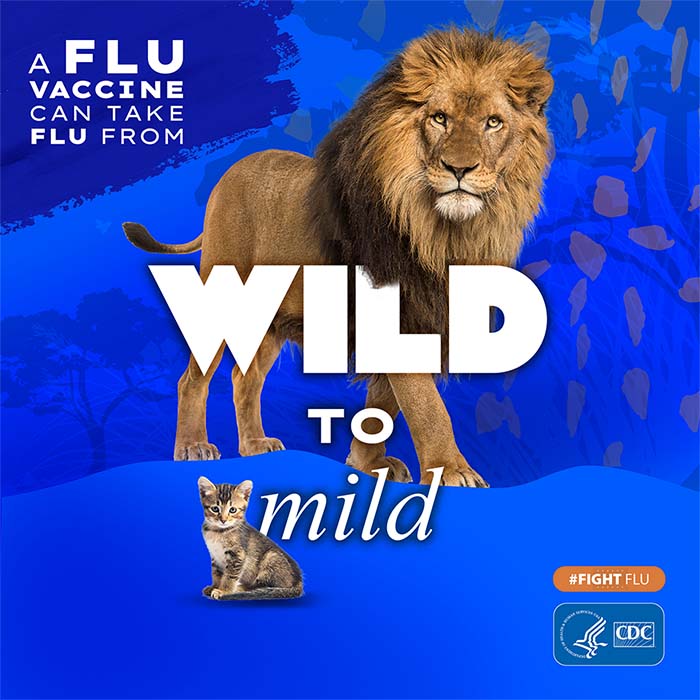CDC Reports Early Increases in Seasonal Flu Activity
October 14, 2022—CDC’s first full FluView report of the 2022-2023 flu season shows that while flu activity is relatively low overall, there are early increases happening in most of the country. Flu activity is highest and increasing the most in the southeast and south-central parts of the United States. This increased activity could signal an early start to flu season. CDC recommends that everyone 6 months and older get vaccinated each year, ideally by the end of October, but vaccination should continue as long as flu viruses may circulate. For people who live in a community where flu activity has already begun, there’s still time to be vaccinated. Most of the time flu activity peaks between December and February, although significant activity can last as late as May.
This week’s FluView report shows that the percentage of respiratory specimens testing positive for flu nationally has reach 3.3%. The percent positive ranges from about 10% in HHS Region 4 (the southeast of the country) to 0.2% in the northwestern part of the country. In Region 6 (the south-central part of the country) 5% of specimens tested positive for flu, followed by Region 9 (the south-west of the country and Hawaii and Guam) at 4%.
The report also shows data from the U.S. Outpatient Influenza-like Illness Surveillance Network (ILINet) which tracks the percentage of people visiting outpatient health care providers or emergency departments for respiratory illness. Respiratory illness, also referred to as influenza-like illness (ILI), is defined as fever or couth or sore throat. ILI is already slightly above the national baseline of 2.5%. National and regional baselines indicate a statistically significant increase above the average percent of patient visits for ILI during weeks of low flu activity in previous seasons. This is a high level of ILI for this time of year and the first time that ILI has been above baseline at this time of year since the 2009 H1N1 flu pandemic.
It’s important to note that ILINet monitors symptoms of respiratory disease, not laboratory-confirmed flu, and will therefore capture respiratory illness visits due to infection with pathogens that can present with similar symptoms, including flu, the virus that causes COVID-19, and RSV. Other respiratory viruses are circulating at elevated levels in the United States at this time; therefore, it is important to evaluate data from ILINet and other symptom-based data in the context of other sources of surveillance data to obtain a complete and accurate picture of flu and other respiratory virus activity.
While the timing and severity of the upcoming flu season cannot be predicted, the United States has experienced little flu for the past two seasons. Reduced population immunity, particularly among young children who may never have had flu exposure or been vaccinated, could bring about a robust return of flu. CDC is particularly concerned about drops in flu vaccine coverage in the past two years among higher risk groups, including children and pregnant people. ILI visits at this time are highest among children 0-4 years, followed by people 5-24 years. Often flu activity first increases in children and then spreads to older age groups.
This week, CDC also reported three new pediatric deaths for the prior (2021-2022) flu season, bringing the season total to 43 pediatric deaths. This report further underscores the importance of vaccination among children. During most years, about 80% of pediatric flu deaths happen in children who have not been fully vaccinated.
More than 105 million doses of flu vaccine have been distributed in the United States at this time. You can find a flu vaccine by visiting vaccines.gov and entering your zip code.
